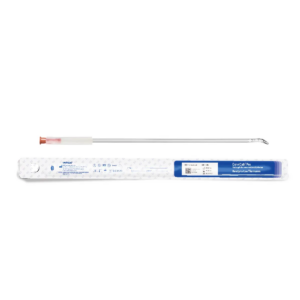In the medical field, the choice of catheter is crucial for patient comfort and safety. A common question arises: what is a hydrophilic catheter? This article will explore the definition, benefits, and applications of hydrophilic catheters, highlighting their importance in modern healthcare.

Defining Hydrophilic Catheters
To understand what is a hydrophilic catheter, it is essential to recognize its unique design and functionality. A hydrophilic catheter is coated with a special material that becomes slippery when exposed to water. This coating facilitates easier insertion and removal, reducing friction and trauma to the urethra. Unlike traditional catheters, which may cause discomfort, hydrophilic catheters are engineered to enhance patient experience.
The hydrophilic surface is a significant innovation in catheter technology. When hydrated, the catheter’s surface becomes smooth, allowing for a gentle passage through the urinary tract. This characteristic is particularly beneficial for patients who require intermittent catheterization, as it minimizes the risk of injury and pain during the procedure.
Benefits of Using Hydrophilic Catheters
The inquiry into what is a hydrophilic catheter naturally leads to the discussion of its benefits. One of the primary advantages is the reduction of urinary tract infections (UTIs). Traditional catheters often contribute to bacterial growth, but the smooth surface of hydrophilic catheters reduces this risk significantly. By minimizing friction, these catheters help prevent trauma and irritation, leading to a lower incidence of complications.
Moreover, hydrophilic catheter use promotes patient independence. Many patients can self-catheterize easily with these products, leading to greater autonomy in managing their conditions. This is especially important for those with chronic urinary retention or neurogenic bladder issues. By providing an easier and more comfortable option, healthcare providers can improve the quality of life for their patients.
Additionally, hydrophilic catheters come pre-lubricated and ready to use, eliminating the need for additional lubricants. This feature simplifies the catheterization process, making it quicker and more efficient for healthcare professionals. The convenience of hydrophilic catheters makes them a preferred choice in both hospital settings and at home.
Applications and Considerations
Understanding what is a hydrophilic catheter also involves recognizing its various applications in healthcare. These catheters are widely used in urology for intermittent catheterization, particularly for patients with conditions such as multiple sclerosis or spinal cord injuries. Their design caters to both short-term and long-term catheterization needs.
Healthcare providers must consider the specific needs of each patient when selecting a catheter. Factors such as catheter size, length, and material should be evaluated to ensure optimal performance. Well Lead Medical offers a range of hydrophilic catheters tailored to meet diverse clinical requirements, ensuring that healthcare professionals have access to high-quality products.
Conclusion
In conclusion, a thorough understanding of what is a hydrophilic catheter reveals its vital role in enhancing patient care. These catheters offer numerous benefits, including reduced friction, minimized risk of urinary tract infections, and improved patient autonomy. With their versatility in applications, hydrophilic catheters are becoming indispensable tools in modern medical practice. By prioritizing the use of high-quality hydrophilic catheters, healthcare providers can significantly improve patient outcomes and experiences. Well Lead Medical remains committed to providing top-notch products that cater to the evolving needs of the healthcare industry.

